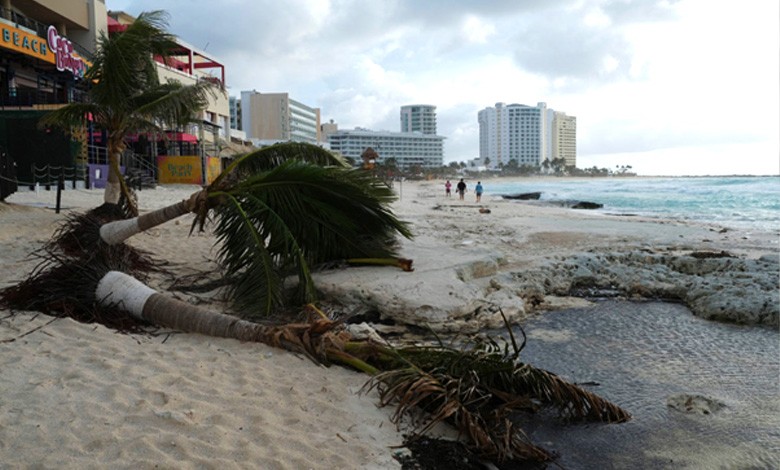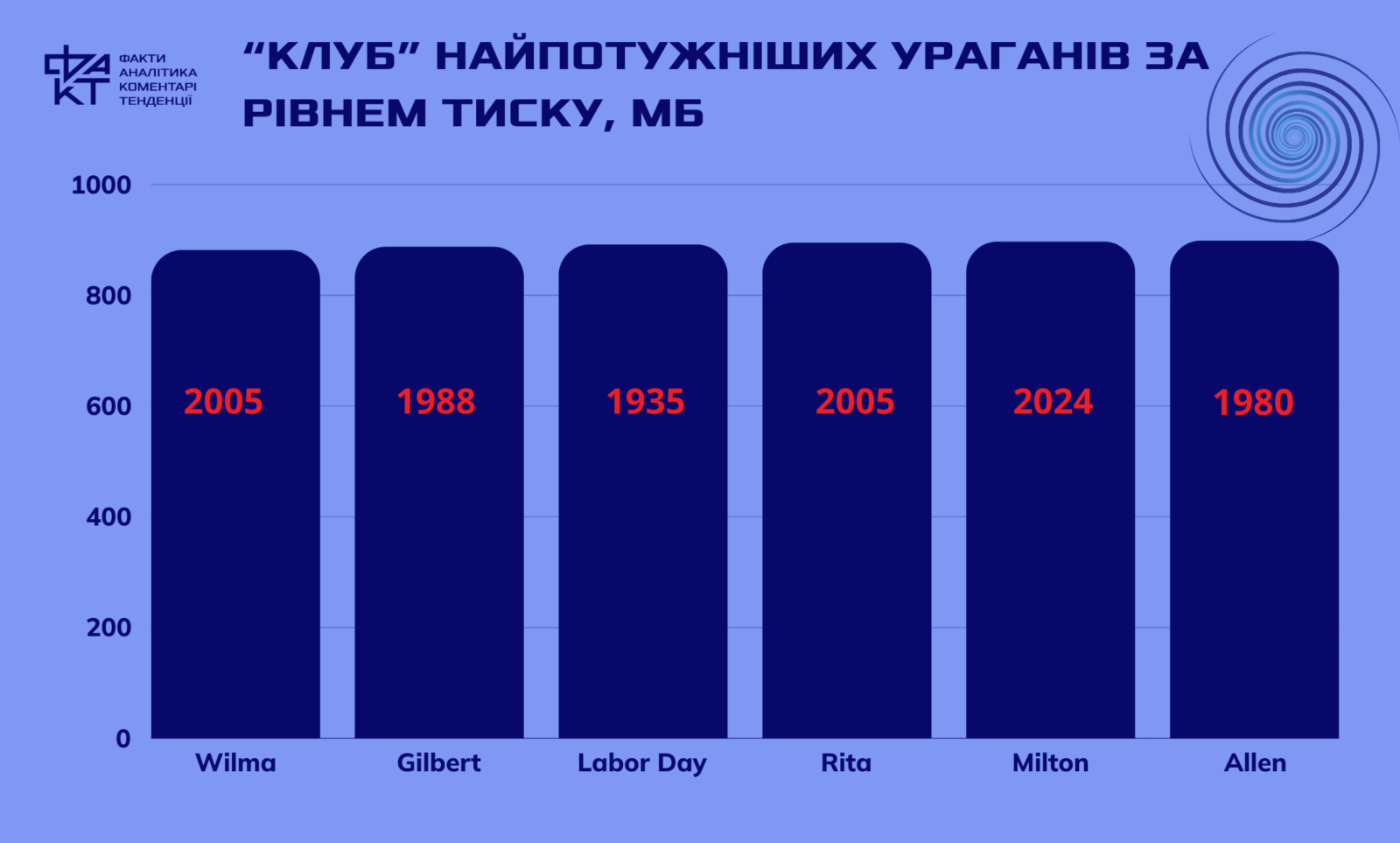Battle with the elements: how the ‘hurricane of the century’ is testing the US

The weather has struck again in a region still reeling from Hurricane Helen, which swept through West Florida two weeks ago, flooding streets and homes and killing at least 230 people. The large-scale evacuation and support arrangements by government agencies and private companies demonstrated how the US responds to natural disasters. We drew attention to the actions of the American government to prevent panic and organize aid to affected regions.
Biden ordered to evacuate due to “hurricane of the century”
President Joe Biden postponed a planned trip from October 10 to 15 to Angola and Germany to oversee preparations and response to the “hurricane of the century.” He urged those living in danger zones to evacuate and stressed that it was a matter of life and death. Biden promised that the government would provide 20 million servings of food and 40 million liters of water, and organize military units with search and rescue teams to help after the storm.
Hurricane Milton, which made landfall in Florida on October 9, 2024, caused significant damage, particularly in the Tampa Bay and Sarasota areas. The storm, initially a Category 5 storm, produced a catastrophic storm surge, strong winds and flooding. Many areas were evacuated and local airports such as Tampa and Orlando closed their doors. Recovery resources have been prepared in advance, but damage to infrastructure and residential buildings could leave many people homeless for a long time. By Thursday morning, the storm had weakened to a Category 1 strength, but experts warned that winds and possible flooding could still damage infrastructure and pose a danger to civilians.
Was Florida prepared for the aftermath of Hurricane Milton?
Florida Governor Ron DeSantis declared a state of emergency on October 5 due to the hurricane. He issued an executive order requiring waste management and landfills in affected counties to operate around the clock to collect trash before the state covers Hurricane Milton. To prevent hazardous waste from building up due to high winds, he also issued an Executive Order calling for the active involvement of the Florida National Guard in the cleanup. The number of such “cleaners” increased from 800 to 4,000 people. Additional dump trucks were allocated to support the cleanup. Sandbag facilities have been set up across the state for flood protection and spillway control.
Two days later, hurricane and tropical storm warnings were issued for the west coast of Florida, affecting nearly 15 million people.
President Joe Biden has approved an emergency order for the state. DeSantis directed the Department of Transportation and the Department of Emergency Management to coordinate resources, and he canceled tolls on many roads in west Florida, including the Florida Turnpike.
Many school systems and universities have canceled classes, including the University of South Florida in Tampa and Florida Gulf Coast University in Fort Myers. Rollins College evacuated its campus, and multiple schools in Marion County opened as emergency shelters.
Trains were cancelled. Airports in Central and Southwest Florida closed, including Tampa International Airport, Sarasota-Bradenton International Airport and others.
The schedules of several cruise lines were also affected by the storm. Attractions at Walt Disney World were also closed.
People were evacuated free of charge
An estimated six million Floridians were ordered to evacuate, one of the largest evacuation efforts in the state’s history since Hurricane Irma in 2017. Evacuation orders were primarily for Hillsborough County and surrounding areas. Volusia and Marion counties also issued evacuation orders for homes at risk. United Airlines has issued a travel advisory for five airports in the state.
Uber has partnered with the Florida Department of Emergency Management to offer free rides to state shelters.
Publix and Walmart changed hours and closed some stores in preparation for the storm. Due to the food panic, stores were experiencing shortages of goods such as drinking water, canned goods and snacks. There were fuel shortages across the state, with 16.5% of gas stations closed, including 43% in the Tampa Bay area. To quell panic, Governor DeSantis said there was enough fuel and urged people to consider evacuating “dozens of miles” instead of “hundreds of miles.” Police escorted fuel tankers to ensure refueling during the evacuation. The American Automobile Association advised Floridians to “take only what you need” and avoid situations where the gas tank is “too empty” before finding a place to fill up.
Unfortunately, the evacuation was not without casualties: one person died in a car accident in Marion County, three in an incident in Fort Lauderdale, and one in Hillsborough County. The number of victims is currently increasing due to the lack of fuel. The Florida Department of Transportation is working to restore roads closed during Hurricane Helen and continues to provide free buses to hurricane-affected counties.
2024 is a hurricane season with record activity
The strongest hurricanes in Atlantic basin history span the range from the Great Depression to the present day. Advances in technology, including satellites and aircraft instruments, make it difficult to compare hurricanes in recent years with those of the 19th and early 20th centuries.
However, there is a list of extremely strong hurricanes, including Milton, who twice joined the “exclusive” club a few days ago. There are two main indicators for determining the intensity of a hurricane and, accordingly, two lists. This is the pressure and wind speed.
A pressure club below 900. In general, the lower the pressure, the stronger the hurricane. Meteorologists talk about pressure in units called millibars, not inches of mercury. Normally, the average pressure at sea level is about 1013 millibars. As we can see, in the conditions under which a hurricane occurs, it is much lower.
Only six Atlantic hurricanes had a minimum pressure below 900 millibars. This is truly an “elite” club.

Wilma set this record in October 2005 while over the western Caribbean Sea. This hurricane also held the record for the smallest eye size on record, only 2.3 miles wide. According to NOAA’s Hurricane Research Division, the average eye is 20 to 40 miles wide.
The Labor Day 1935 hurricane was the only one to make landfall at maximum intensity. It ravaged the Florida Keys with winds estimated at 185 miles per hour and a storm surge of up to 20 feet. Labor Day remains America’s strongest hurricane to make landfall. Its winds and waves caused 408 deaths, mostly among World War I veterans working on construction sites in the area.
Hurricanes Camille, Katrina, and Mitch also had significant pressure readings, but did not reach the catastrophic numbers to make the elite list, although they did produce severe winds and flooding.
Another indicator used to classify hurricanes is the maximum sustained wind speed. It forms a “hurricane club” with a speed of more than 180 miles per hour.
Today, these speeds are most often measured by reconnaissance aircraft missions, as the most powerful hurricanes typically occur in the Caribbean Sea, Gulf of Mexico, or southwest Atlantic Ocean, where these aircraft can operate.
There are nine Atlantic hurricanes that have reached maximum winds of at least 180 miles per hour. You can see them on the infographic.

Overall, the National Oceanic Atmospheric Association predicted that the 2024 hurricane season will be more active than usual. Part of the reason for this is the rise in average sea temperatures due to human-induced climate change.





